In today’s online world, grabbing attention can feel like trying to shout over a crowd at a concert. With so many brands and creators vying for the spotlight, sticking to the same old marketing tactics just doesn’t cut it anymore.
I’ve particularly noticed a MASSIVE uptick in competition since the pandemic. It’s like everyone and their grandmother became an influencer while stuck in quarantine.
With endless content and competition online, how do you stand out and make a lasting impression? The answer lies in creativity.
The thing is, just being a creator doesn’t make you creative. It takes a bit of talent and a bit of the right strategy to reach your target audience and build real brand loyalty.
So if you’re feeling stuck or just looking for fresh ways to boost your brand, these creative marketing ideas will be just the ticket. Marketing your creative work can be challenging, but the juice is worth the squeeze, my friends.
Whether you’re just starting out or looking to reach your existing customers better, these tips will help you cut through the noise and truly connect with your followers.
Content Marketing Ideas
From interactive quizzes and user-generated content to in-depth articles and behind-the-scenes looks, these creative marketing ideas related to content will help you create content that resonates and drives deeper connections with your audience.
1. Interactive Content
This is one of my favorite marketing ideas because it’s one we have personal experience with.
Interactive content engages your audience more than passive or static content, making it a powerful tool for boosting engagement. Tools like Typeform and TryInteract allow you to create interactive quizzes, polls, and forms that you can share with your audience.
We once ran a really effective marketing campaign on Pinterest using a quiz on TryInteract. It was one of our better creative marketing ideas that brought in a lot of leads to our email list and many sales.
The cool thing about this type of content is that it can also provide valuable insights into audience preferences and behaviors. When you learn more about your audience, you can create better content and offers for them.
You can embed quizzes and polls in your blog posts or share them on social media channels.
2. User-Generated Content
User-generated content (UGC) is a powerful way to amplify your brand’s reach and build trust. Encourage your audience to create and share content related to your products or services through platforms like Instagram.
One of the best examples of this is how GoPro leverages UGC by featuring videos from their users, which fosters a strong sense of community and authenticity.
Tools like Yotpo help manage and showcase UGC on your website by integrating customer reviews, photos, and testimonials. UGC not only builds credibility by showcasing real customer experiences but also engages your audience by making them a part of your brand’s story.
3. Long-Form Content with Deep Dives
Long-form content offers an in-depth exploration of topics, provides a lot of value for your audience, and can help get you SEO traffic.
This kind of content is also important for establishing yourself as an authority in your niche. It can be a great place to embed content like quizzes, email opt-ins, and other offers.
Examples of long-form content include:
- How-to guides
- Case studies
- Testimonials
- Listicles and other informational posts
We write a lot of long-form content along with tools like SurferSEO to help drive search traffic to our website.
Neil Patel is one of the kings of the industry of long-form content. You can read his guide on why you should create long-form content if you want to learn more.
4. Storytelling Through Case Studies
Storytelling is a powerful marketing strategy you can use to connect with your audience, and using case studies takes it a step further by showing real-world success stories.
A good case study breaks down how your product or service solved a specific problem for a client or customer, turning dry data into an engaging narrative.
One brand that does this well is HubSpot. They regularly publish case studies showcasing how their CRM tools help businesses improve their marketing strategies, complete with results that highlight the value of their services.
Another example of a more personal storytelling style is a case study like this one from Avocadu on how a client used the Avocadu weight loss program to lose weight.

To create your own case studies, tools like Canva can help you design professional-looking reports that showcase the impact of your work.
Pair the numbers with compelling storytelling, focusing on the challenges faced, the solutions you provided, and the success achieved.
Case studies not only build trust and credibility but also provide potential clients with a clear understanding of how you can help them succeed.
5. Behind-the-Scenes Content
Behind-the-scenes content is one of the best marketing ideas you can use to let your audience see the real you, offering an authentic glimpse into your creative process, your workspace, or even the daily challenges you face as a creator.
This kind of content humanizes your brand and builds a deeper connection with your audience. It shows them the hard work and passion behind what you create.
A good example of this kind of content is our more personal YouTube video that gave our audience some insight into what was happening in the SEO world at the time.
Instagram and TikTok provide a great space for you to easily share your own behind-the-scenes content — whether it’s packing orders, designing a new product, or planning your next big idea.
These sneak peeks make your audience feel like they’re part of your journey and help build loyalty and trust over time.
6. Trend-Driven Content
Staying on top of trends is a great way to stay relevant and attract new eyes to your brand. Trend-driven content involves creating posts, videos, or articles around what’s currently popular in your niche or across social media platforms.
The key is to hop on these trends quickly to keep your content fresh and engaging!
For example, when the TikTok “#SmallBusinessCheck” trend took off, many small creators shared behind-the-scenes looks at their businesses, boosting visibility and engagement. Jumping on trends like this can put your content in front of a wider audience.
To find and follow trends, tools like Google Trends or BuzzSumo are great for spotting what’s currently hot in your industry.
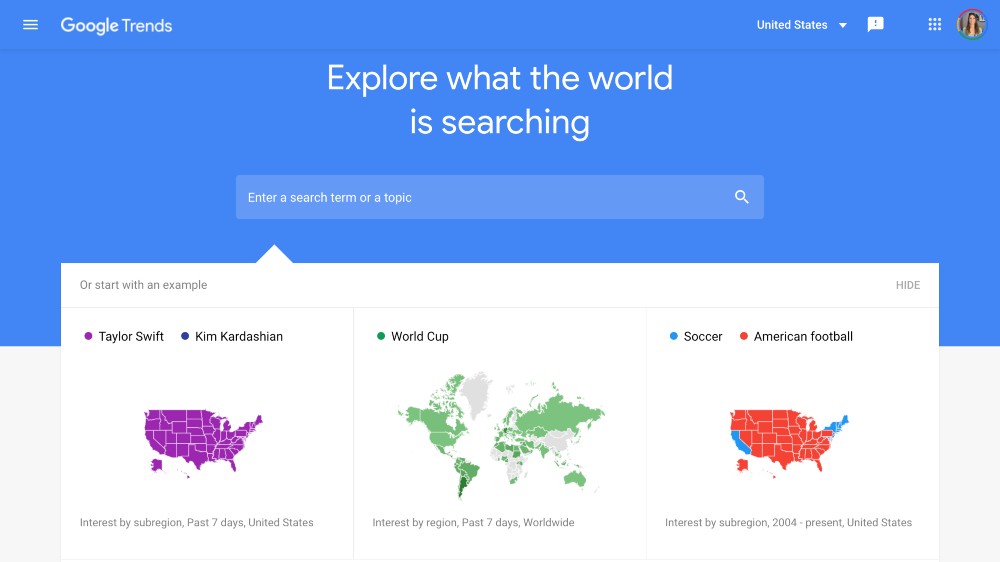
Just remember to stay authentic—choose trends that align with your brand’s voice and audience interests.
7. Educational Series or Tutorials
Educational series and tutorials are great marketing ideas to showcase your expertise while delivering real value to your audience. When you break down complex topics into easy-to-follow steps, you not only help your audience learn but also establish yourself as an authority in your niche.
Platforms like YouTube and Skillshare are fantastic for sharing educational content.
Creators like Pat Flynn from Smart Passive Income do this well, regularly offering free video tutorials that break down everything from podcasting to building an online business.
We also make similar video tutorials on topics related to starting an online business:
Tools like Camtasia or Loom make it easy to record and share these lessons. The more value you offer, the more trust you build with your audience, making educational content a win-win for both you and your followers.
Social Media Marketing Ideas
These creative marketing ideas cover everything on social media platforms from shoppable posts and ephemeral content to TikTok trends and interactive polls, providing you with diverse methods to boost engagement and expand your reach.
8. Shoppable Social Posts
Shoppable social posts are a game-changer for creators selling physical products. They allow your audience to buy directly from your social media posts without leaving the platform, making the purchasing process smooth and convenient.
Platforms like Instagram, Facebook, TikTok, and Pinterest have integrated shoppable features where you can tag products in posts, Stories, or even Reels.
We’ve seen brands like Glossier use Instagram’s shoppable tags effectively by tagging their skincare and beauty products in beautifully styled posts. Followers can easily click through and purchase with just a few taps.
If you’re selling physical products, tools like Shopify can help you set up a store that syncs with your social accounts, making the process of tagging and selling even easier. This type of content turns casual scrollers into buyers, boosting your sales with minimal effort.
9. Ephemeral Content (Snapchat/Instagram Stories)
Ephemeral content, like Instagram Stories and Snapchat, is perfect for creating urgency and engaging your audience with short, time-sensitive content.
Because these posts disappear after 24 hours, they encourage your followers to act quickly, whether it’s viewing behind-the-scenes content or participating in limited-time offers.
We’ve had success using Instagram Stories to announce flash sales and share sneak peeks of upcoming product launches. It works because the time-bound nature of the content drives immediate engagement from your audience.
Tools like Canva are great for creating quick, professional-looking story templates that grab attention.
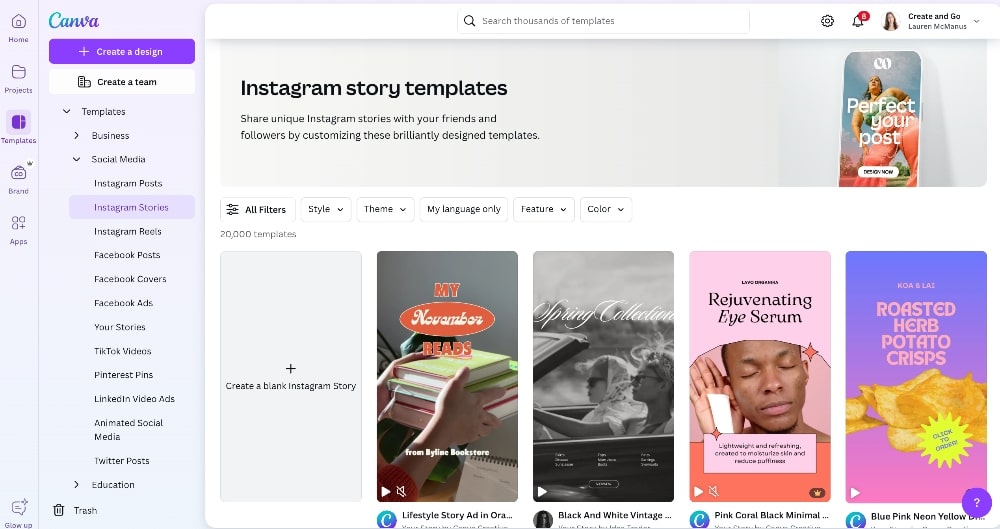
Whether you’re sharing a day-in-the-life vlog or running a poll, ephemeral content keeps things fresh and engaging without cluttering up your main feed.
10. TikTok Challenges and Trends
TikTok challenges and trends are marketing ideas that can skyrocket your visibility, especially when you hop on viral movements. Participating in a popular challenge not only boosts engagement but also introduces your content to a wider audience as part of the platform’s algorithm-driven discovery process.
A great example of this is the #GuacDance challenge by Chipotle, which generated millions of views and boosted their brand engagement. Simple, relatable challenges can help your content go viral quickly.
Tools like CapCut make it easy to create fun, trend-driven videos that are ready to post on TikTok.
Keep an eye on TikTok’s Discover page to stay on top of current trends, and try to make the content your own while staying true to your brand.
11. Livestreaming Events
Livestreaming is one of the best ways to engage with your audience in real-time, creating a personal connection through direct interaction.
Whether you’re hosting a Q&A, launching a new product, or sharing a behind-the-scenes look at your process, platforms like YouTube Live, Instagram Live, and Facebook Live offer seamless ways to go live and connect with followers.
We’ve held live-streaming Q&A events in our private member community for our paid product:
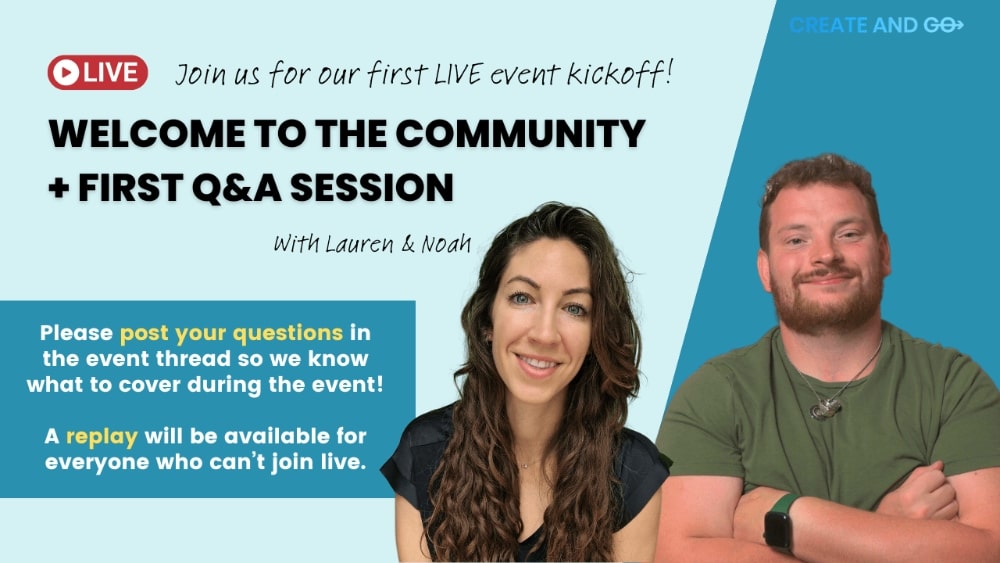
We’ve also seen creators like Gary Vaynerchuk use Instagram Live to answer audience questions and share business advice, making the experience feel personal and authentic.
If you’re new to live streaming, tools like StreamYard make it easy to create polished, professional live broadcasts that include screen-sharing and guest interviews.
12. Social Media Takeovers
A social media takeover involves letting another creator or influencer temporarily “take over” your social media account. This strategy is great for collaboration and cross-promotion, as it introduces your audience to a new perspective and helps you tap into a broader network of potential followers.
Our friends over at Wifi Tribe have let members of their community do Instagram takeovers to show followers a more personal and different perspective into a day in the life of a community member.
We’ve seen successful takeovers from brands like NASA, where astronauts or influencers host Instagram takeovers, giving fans an insider look at space missions.
This boosts engagement and adds an element of surprise to their content.
To get started, reach out to creators or influencers in your niche for collaborations. Instagram and TikTok are popular platforms for takeovers.
13. Interactive Polls and Q&A Sessions
Interactive polls and Q&A sessions are fantastic for engaging your audience and getting them involved with your content.
Platforms like Instagram Stories, Twitter, and Facebook allow you to create polls or ask your audience questions, which not only boosts engagement but also gives you valuable insights into their preferences.
A brand that nails this is Netflix, which regularly runs Instagram Story polls, asking followers to vote on which shows they should binge next. It creates a conversation and makes followers feel like they’re part of the decision-making process.
You can use Instagram’s built-in poll and Q&A stickers or Twitter Polls to easily create interactive sessions. These features are a quick and easy way to gather feedback or spark discussions, keeping your followers engaged and invested in your brand.
14. Social Media Contests and Giveaways
Contests and giveaways are tried-and-true marketing ideas to boost your engagement and reach new followers. By offering a prize, you incentivize your audience to like, share, and comment on your posts, expanding your visibility and growing your community.
One influencer I have seen doing this REALLY well is Laura Beverlin. She often partners with other influencers to give followers $1,000 in cash and other gifts in exchange for liking or commenting on posts to boost her engagement.
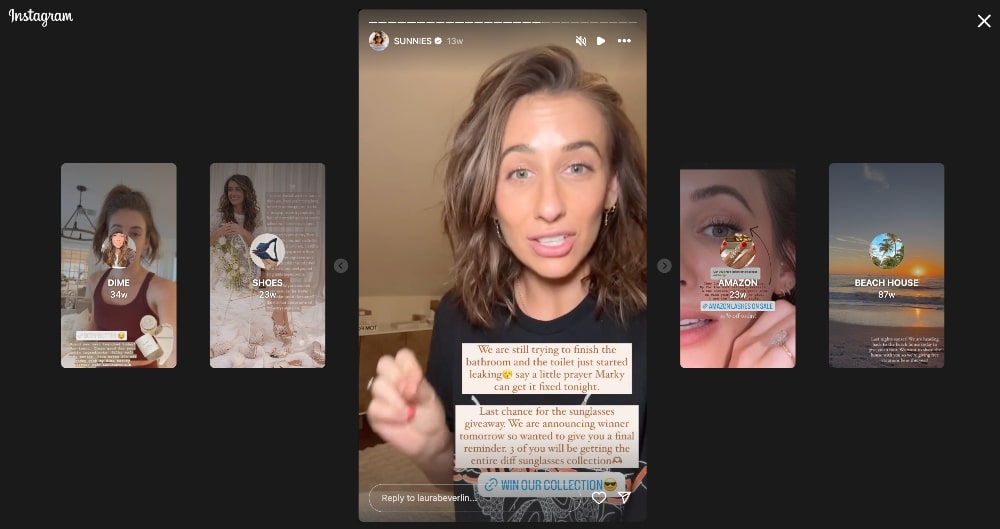
You can host giveaways and contests yourself or use a tool like Rafflecopter to easily set and and manage everything. They help you track entries, randomize winners, and ensure your giveaway runs smoothly.
Whether it’s for a product launch or just to reward your loyal followers, a contest can create buzz and excitement around your brand.
Experiential and Other Creative Marketing Ideas
These creative marketing ideas offer immersive and memorable experiences as well as outside-the-box thinking for the average creator.
From augmented reality and virtual events to pop-up shops and collaborations with other creators, these ideas will help you engage your audience in exciting and impactful ways.
15. Augmented Reality Experiences
Augmented Reality (AR) takes your audience engagement to a whole new level by blending the digital and physical worlds. Imagine letting your customers “try on” your products virtually!
IKEA does this really well with IKEA Kreativ, which lets users see how furniture looks in their homes before buying.
AR isn’t just for big brands anymore. As a creator, you don’t need a huge budget to get started. Tools like Zappar and other augmented reality software allow you to create custom AR experiences for your audience.
If it works with your products, it can really help you stand out in a crowded market and boost your conversion rates
16. Virtual Events and Webinars
Virtual events and webinars offer a fantastic way to connect with your audience, educate them, and promote your products all at once. Platforms like Zoom make hosting these events easy and accessible, even for new creators.
When we hosted our first webinar on digital marketing strategies, we were blown away by how interactive it was. The live chat feature let us answer questions in real time, which kept our audience engaged throughout.
We’ve used both WebinarJam and Stealth Seminar to automate our follow-up emails, making sure no one slipped through the cracks.
The beauty of virtual events is that you can create them from anywhere, and they’re cost-effective compared to in-person events. Whether you’re hosting a workshop, Q&A session, or product demo, virtual events can help you grow your community and make real connections.
17. Pop-Up Shops and Interactive Booths
Pop-up shops and interactive booths can bring a physical, hands-on experience to your brand, even if you’re primarily a digital creator. Whether it’s at a local market or a major event, these short-term retail spaces give you the chance to connect face-to-face with your audience.
You can use Shopify POS to process sales on-site, and it can be a great way to engage a community in real life while also growing your email list for future digital marketing campaigns.
Pop-ups create a memorable experience and are a fun way to interact with your audience. Even if your business is primarily online, these in-person events can strengthen relationships and build excitement around your brand.
18. Experiential Marketing Campaigns
Experiential marketing is all about creating immersive, memorable experiences for your audience. It goes beyond traditional ads to offer something your followers can interact with directly.
Red Bull is famous for this type of marketing with their extreme sports events that align perfectly with their brand.
For smaller creators, experiential marketing might look like hosting a creative workshop, running an interactive online challenge, or even creating a branded experience at an event.
Tools like Eventbrite can help you plan and promote your event. Whether online or in-person, experiential marketing campaigns give your audience something they’ll remember—and talk about long after the event is over.
19. Collaborations with Other Creators
Collaborating with other creators is one of the best ways to expand your reach and tap into new audiences. Whether it’s a joint Instagram Live, a collaborative YouTube video, or a co-hosted giveaway, partnerships can bring massive benefits to both sides.
We’ve partnered with several brands in our niche like Kit and Teachable for product launches and webinars, and each time it helped grow our email list and audience faster than going solo.
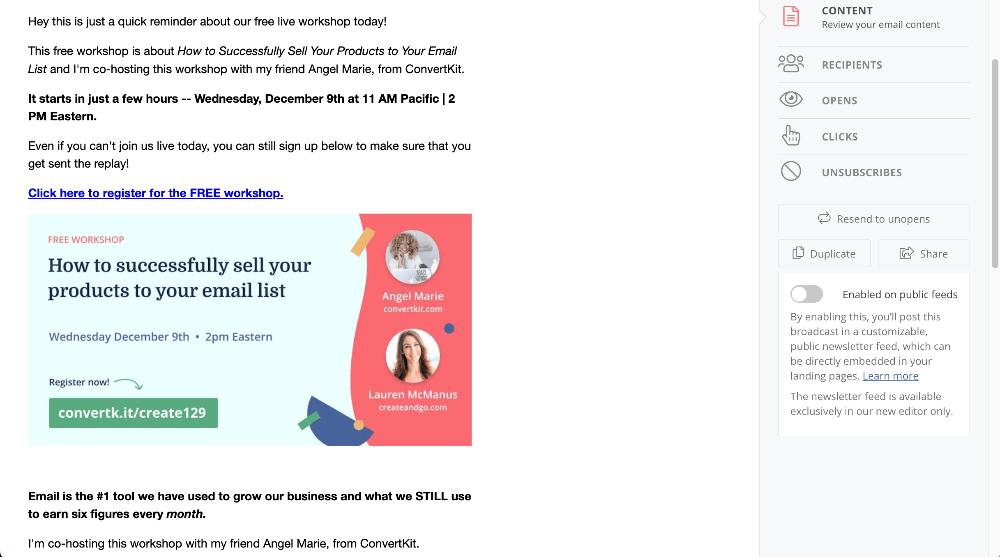
Platforms like Collabstr can connect you with influencers in your industry, making the whole process easier.
The key is finding creators who share your values and have a similar target audience. Collaboration allows you to pool your resources, create fresh content, and gain exposure to new fans, all while building relationships within your community.
20. Immersive Storytelling with VR
Virtual Reality (VR) might sound futuristic, but it’s quickly becoming a tool creators can use to tell immersive stories. VR can transport your audience into another world, offering a unique experience they can’t get anywhere else.
Brands like Oculus and Google Cardboard are making VR more accessible and affordable.
Tools like Adobe Aero help you create these experiences without needing a huge budget or technical knowledge.
For creators, VR storytelling adds depth and engagement to your content, helping you stand out in a crowded space. Whether it’s a product launch, virtual tour, or immersive tutorial, VR gives your audience something unforgettable.
FAQs About Creative Marketing Ideas
Conclusion
Growing your audience as a creator isn’t easy, but these creative marketing ideas can help you stand out, connect with your community, and get the momentum you need.
Whether you’re just starting or trying to get to the next level, it’s important to experiment and see what works best for you. Not every strategy will be a home run right away, and that’s okay.
Start small, test what works for you, and don’t be afraid to make adjustments along the way. Each step you take is a valuable learning experience – success or not.
The key is to stay flexible, keep learning, and not be afraid to try new things.
You don’t need a huge budget to make an impact—sometimes the most authentic, simple ideas can bring the best results. Just focus on building relationships with your audience, delivering value, and staying true to your brand.
Growth takes time, but with persistence and creativity, you can get there.